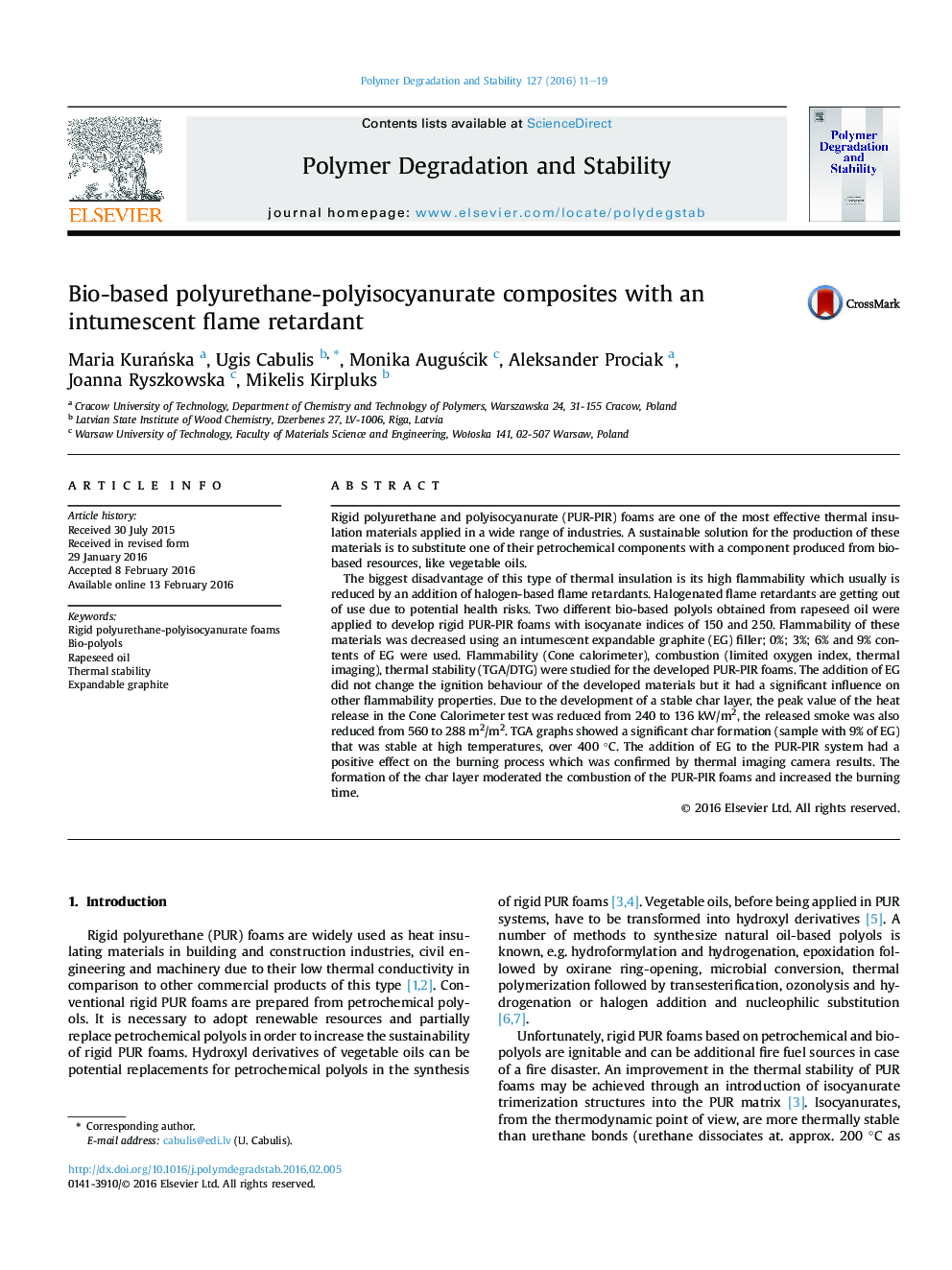| Article ID | Journal | Published Year | Pages | File Type |
|---|---|---|---|---|
| 5201160 | Polymer Degradation and Stability | 2016 | 9 Pages |
Rigid polyurethane and polyisocyanurate (PUR-PIR) foams are one of the most effective thermal insulation materials applied in a wide range of industries. A sustainable solution for the production of these materials is to substitute one of their petrochemical components with a component produced from bio-based resources, like vegetable oils.The biggest disadvantage of this type of thermal insulation is its high flammability which usually is reduced by an addition of halogen-based flame retardants. Halogenated flame retardants are getting out of use due to potential health risks. Two different bio-based polyols obtained from rapeseed oil were applied to develop rigid PUR-PIR foams with isocyanate indices of 150 and 250. Flammability of these materials was decreased using an intumescent expandable graphite (EG) filler; 0%; 3%; 6% and 9% contents of EG were used. Flammability (Cone calorimeter), combustion (limited oxygen index, thermal imaging), thermal stability (TGA/DTG) were studied for the developed PUR-PIR foams. The addition of EG did not change the ignition behaviour of the developed materials but it had a significant influence on other flammability properties. Due to the development of a stable char layer, the peak value of the heat release in the Cone Calorimeter test was reduced from 240 to 136 kW/m2, the released smoke was also reduced from 560 to 288 m2/m2. TGA graphs showed a significant char formation (sample with 9% of EG) that was stable at high temperatures, over 400 °C. The addition of EG to the PUR-PIR system had a positive effect on the burning process which was confirmed by thermal imaging camera results. The formation of the char layer moderated the combustion of the PUR-PIR foams and increased the burning time.
